In photos
A busy day for HRFE HAZMAT crews as they took to a realistic training situation with members of Brenntag in Burnside.
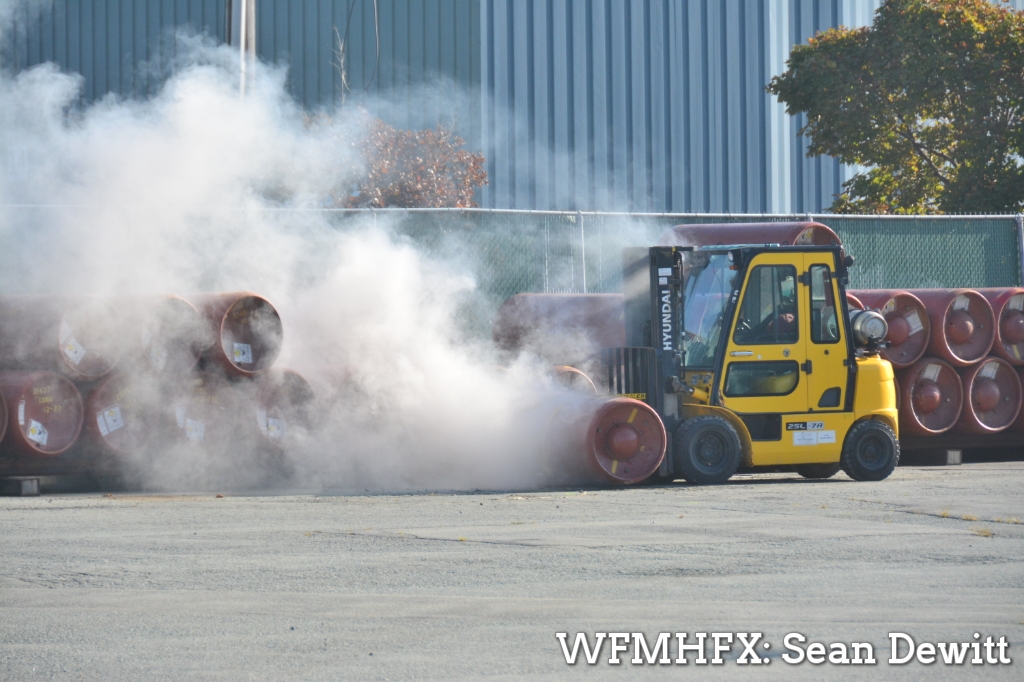
With limited information for the crew, a call for a serious HAZMAT spill came in, sending a full specialty call from HRFE.
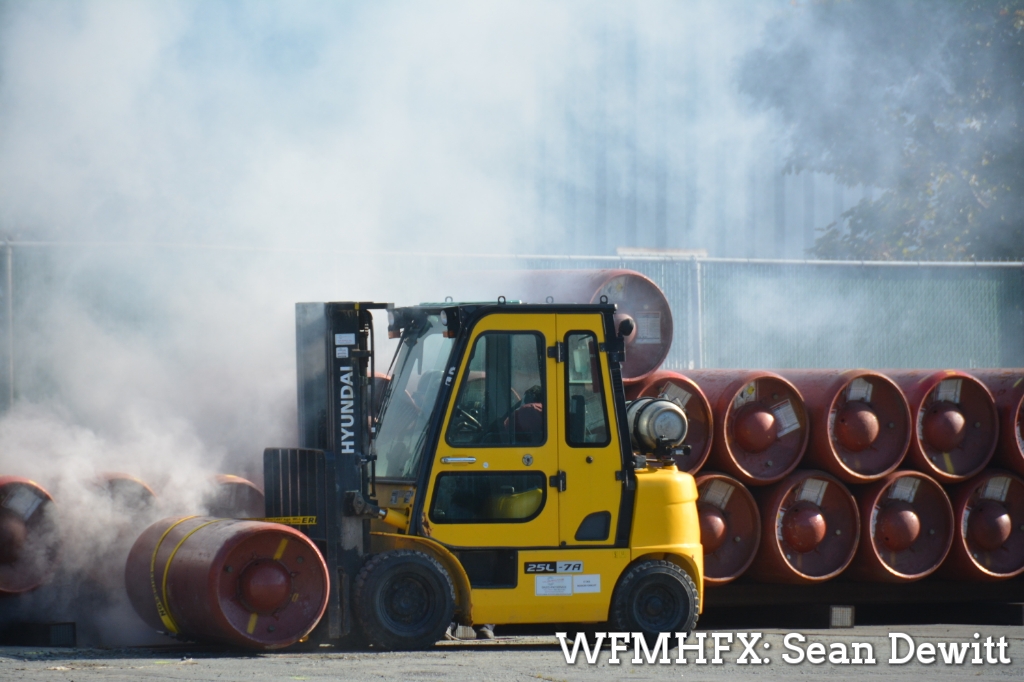
Arrival – Crews began setting up and preparing required stations (such as decon) and preparing gear. Fire gets a heads up of what the scene looks like via drone as crews suit up and gather information from staff on scene. They find out that there in a forklift with a leaking canister and forklift driver in the cab unresponsive.
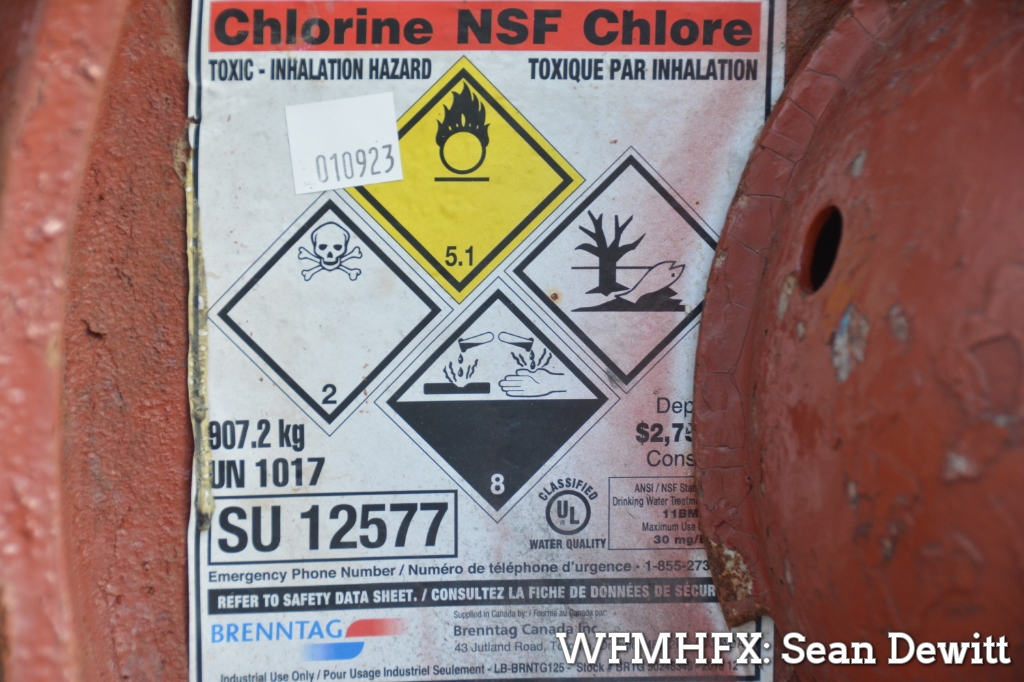
A fast rescue crew prepares and moves in, securing the operator and providing air.

They evacuate to decon and waiting EHS as well as provide first eyes on intel. During the rescue the vehicle would also be shut down and secured.
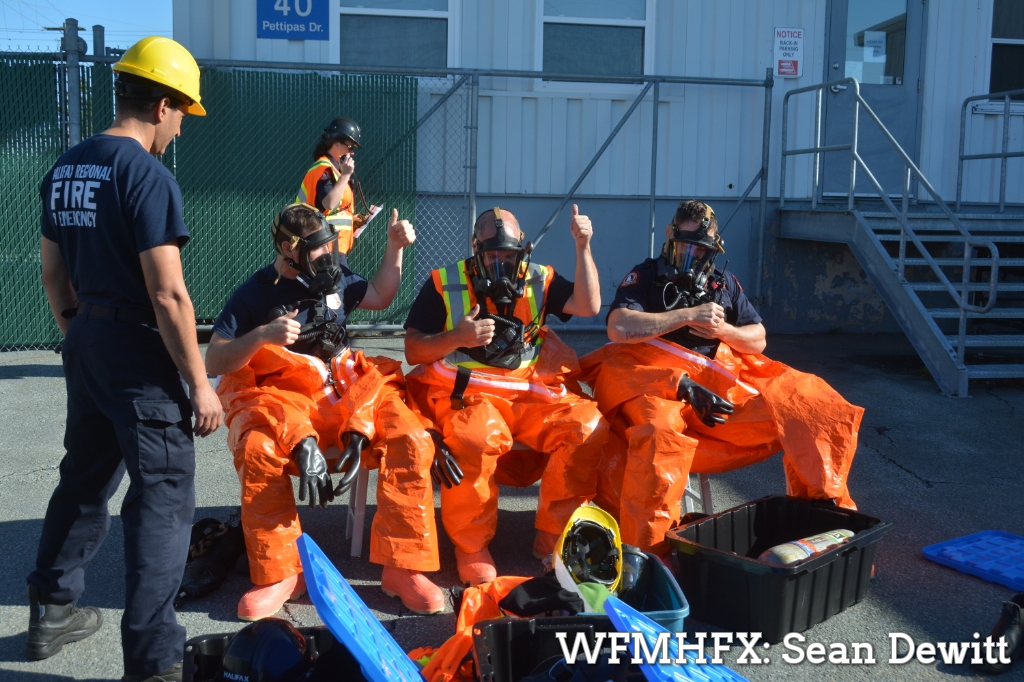
Response – A full HAZMAT suited team moves in with tools and a fan. In a real situation, a wide evacuation of the area would be requested with the help of police. This first crew ensures that all affected vehicles and canisters are fully secure.
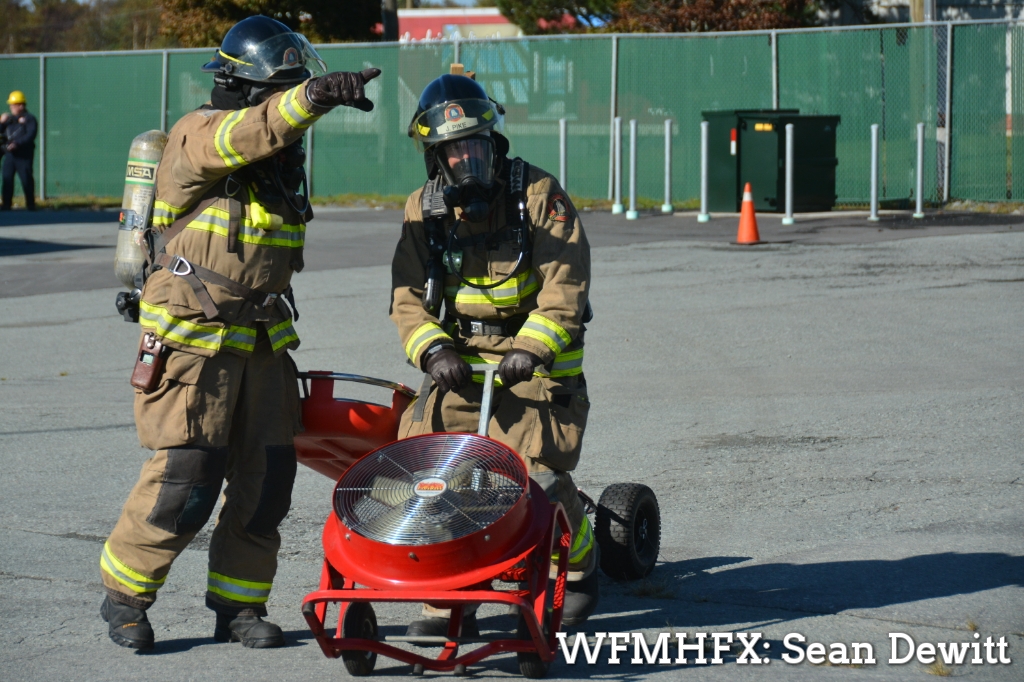
They would relay information back to command with their findings and begin to cap the leak according to the damage / cause of the leak.

They are wearing high tolerance hazard suits with SBA mask and tanks which are checked to be secured multiple times before entering the zone.
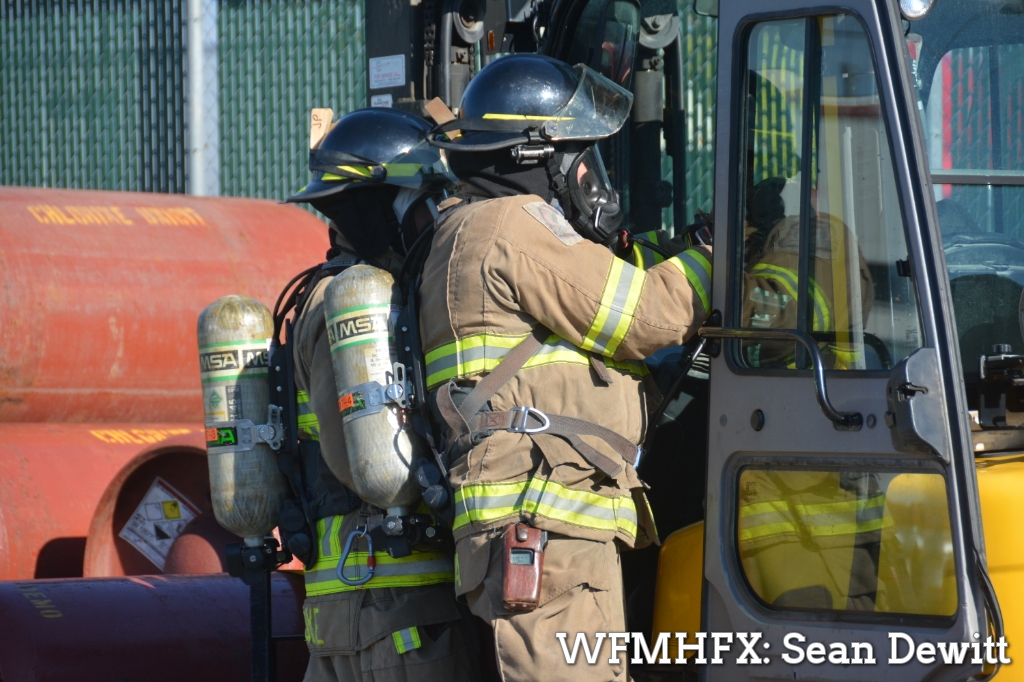
The crews, once comfortable with the security of the hazard, leave to decon.
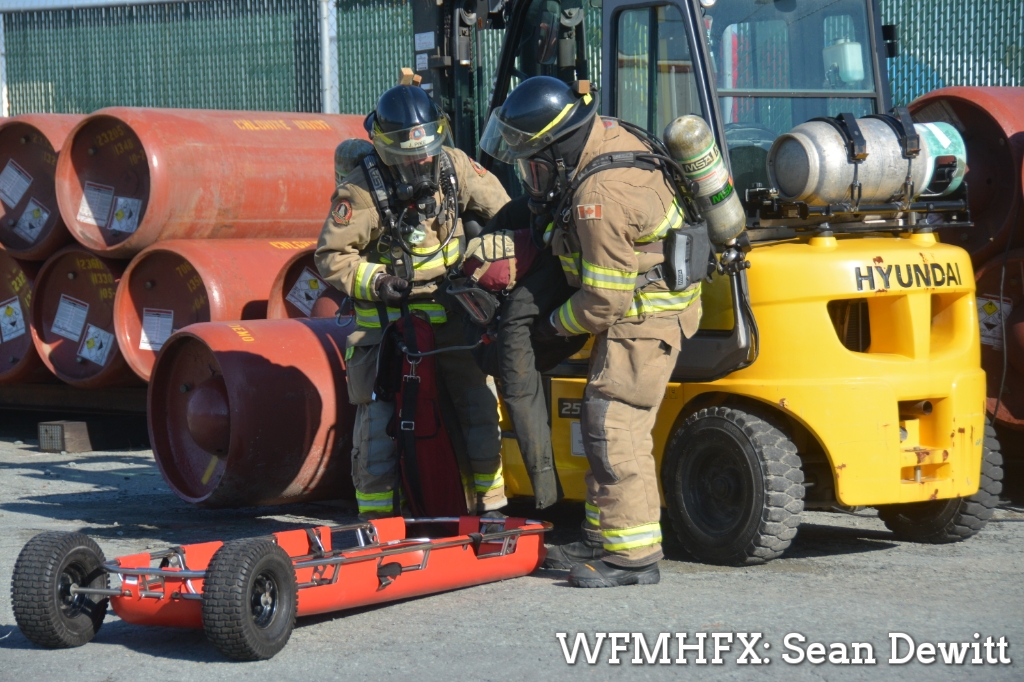
Second team – A second team, in full hazard suits, enter the scene and double check / alter the original team’s cap and security of the canister. Once satisfied, they respond to decon.

Decontamination station – Set up behind the scenes, a team sets up a series of mini “pool” where all crews report to after being in the affected area.
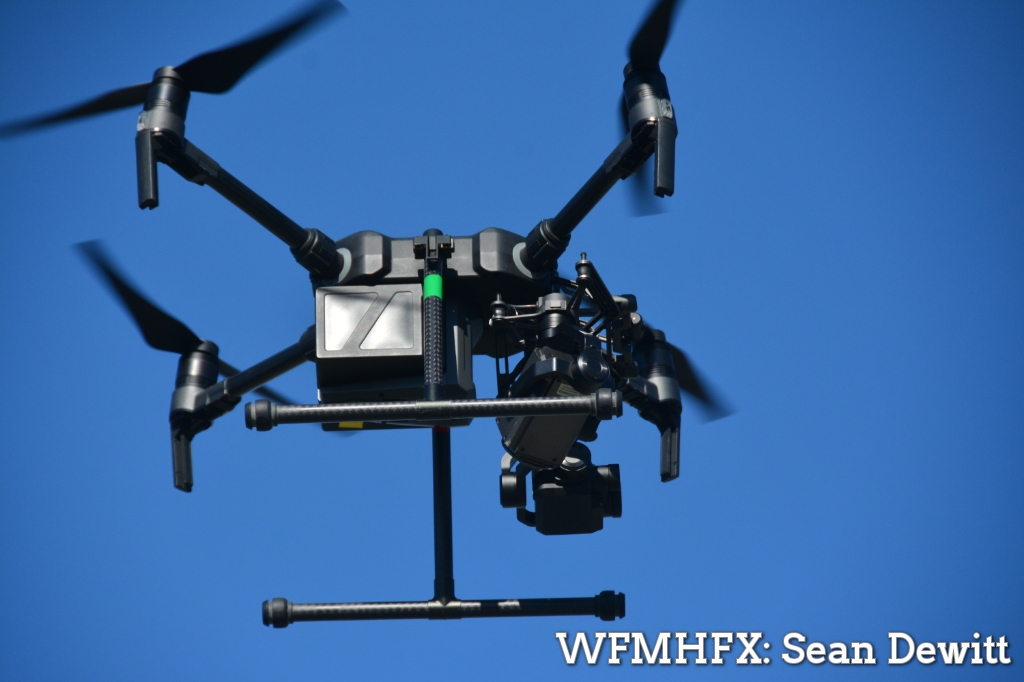
This includes decon of the previous victim. Starting with the bottom of their boots, the crews then move through a series of pools where they are sprayed and scrubbed, before exiting where more decon crew assist with the removal of the bulky HAZMAT suits.
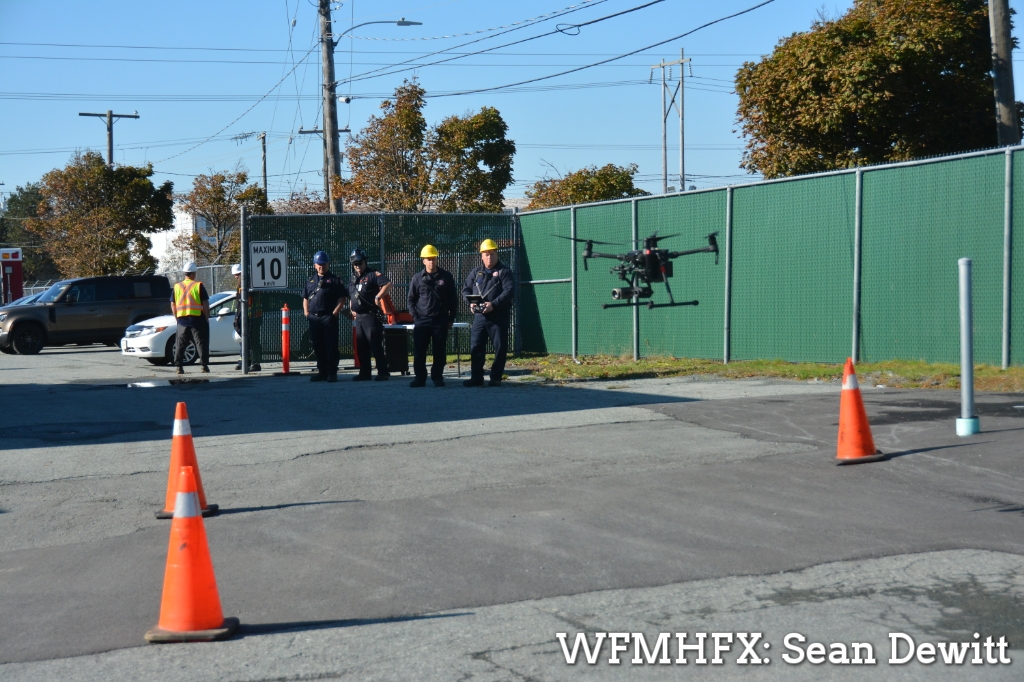
What is used by the decon crews will vary based on what the crews were exposed to, including how the waste water is disposed of.
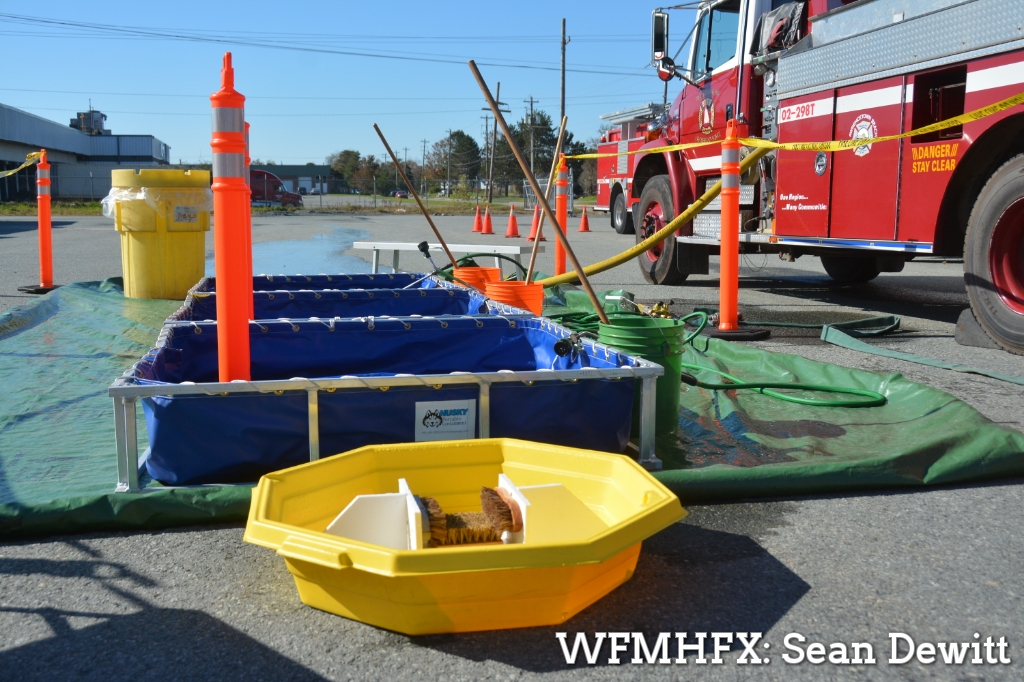
Gear – Besides the obvious gear, such as suits and masks, crews use various tools to get through any scene.
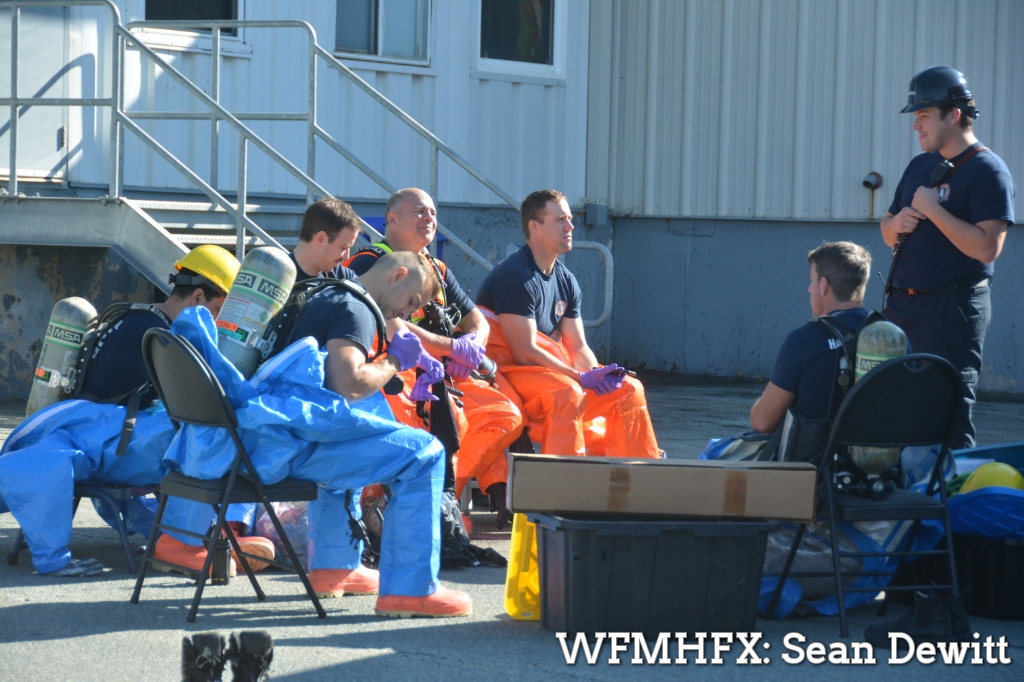
Wibdsocks, for example, are used to monitor wind direction. These are useful for both command crew safety but also predicting immediate evacuation zones.
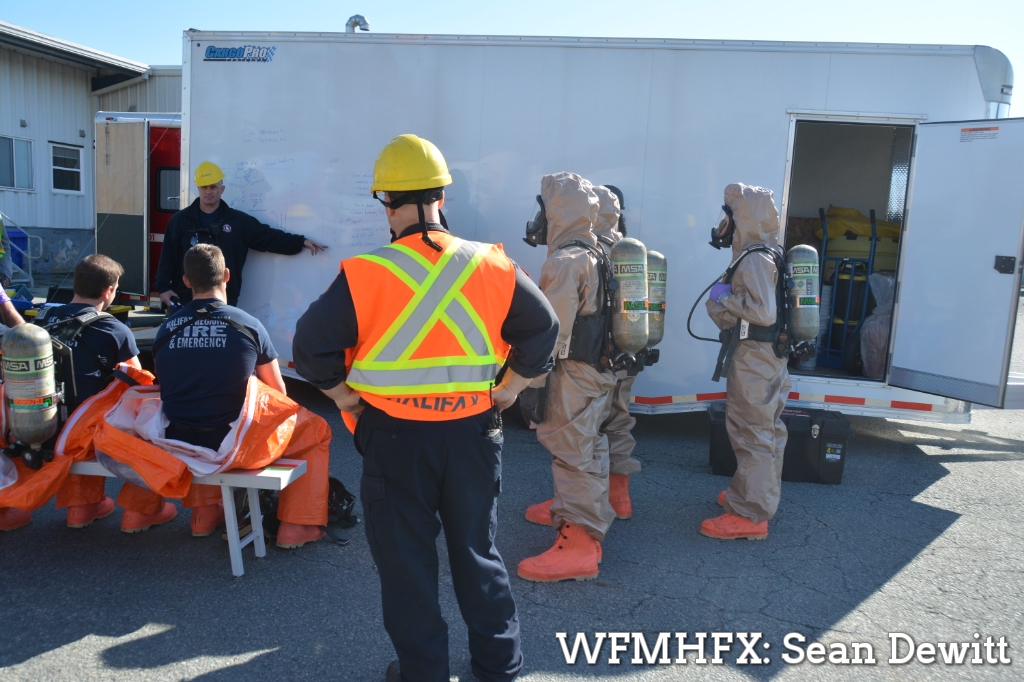
Various cap tools for gas bottles and mats used for drain blockage are also some of many vital tools in the HRFE HAZMAT chest.

Fans are also helpful in blowing gases away from rescuers immediately on scene.
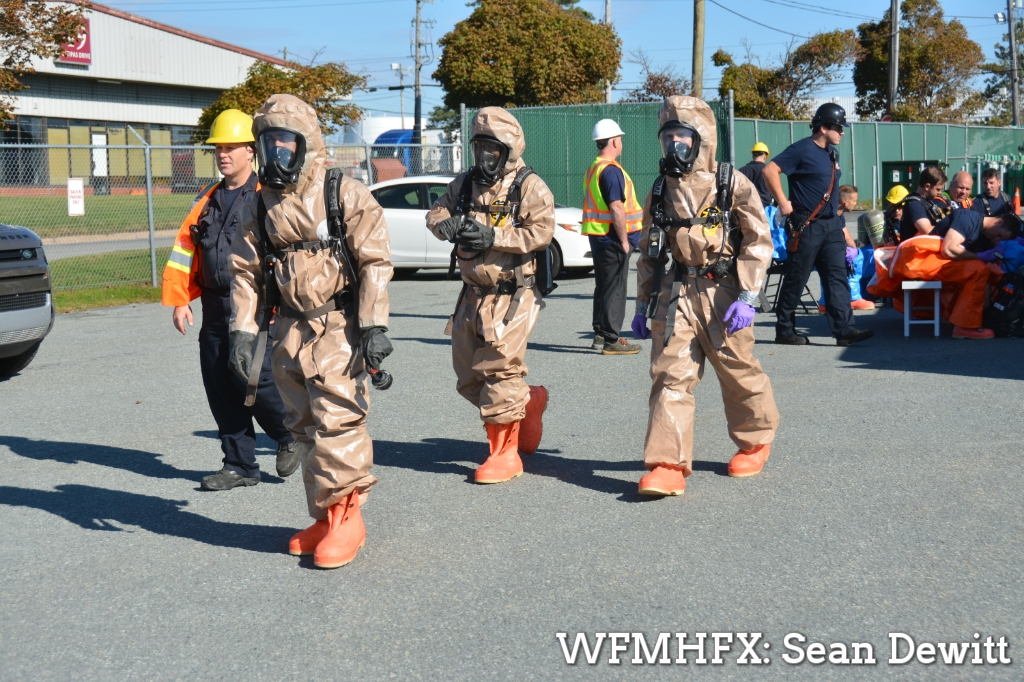
A considerable amount of effort goes into every HAZMAT training scenario so all crews are well prepared for when the real call comes through.

Ps – We will be at Brenntag again this weekend with HRFE for another scenario.
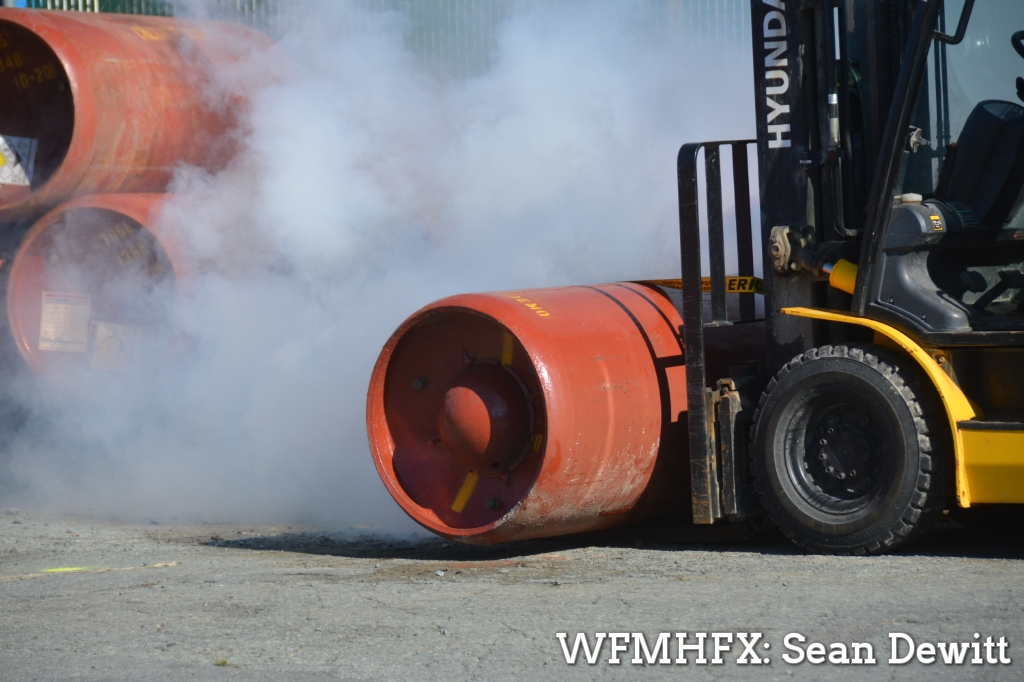
.
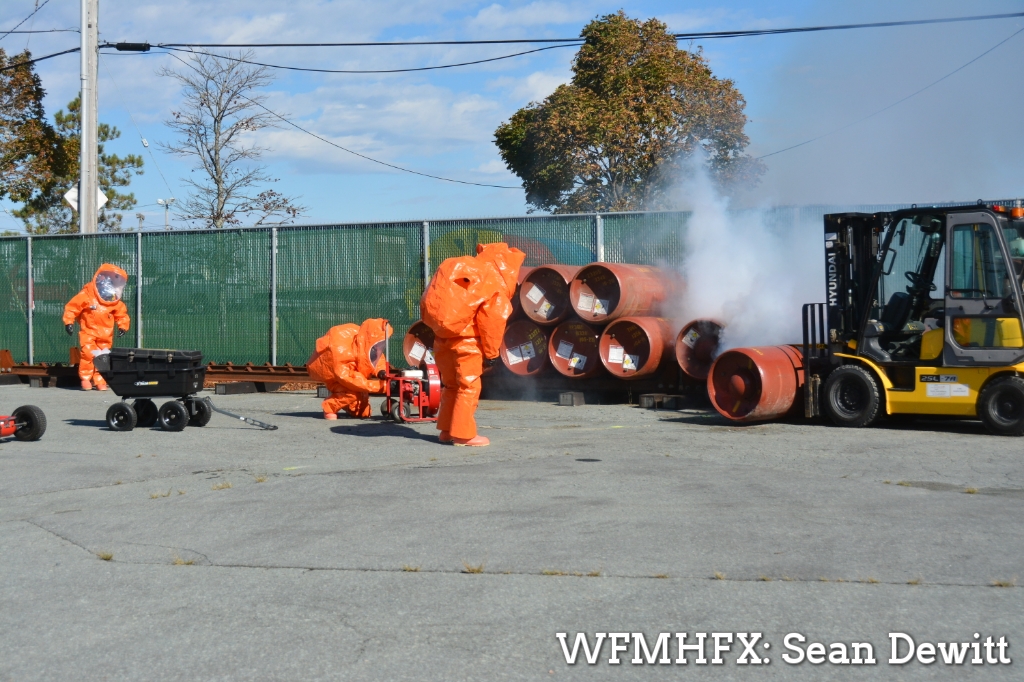
.
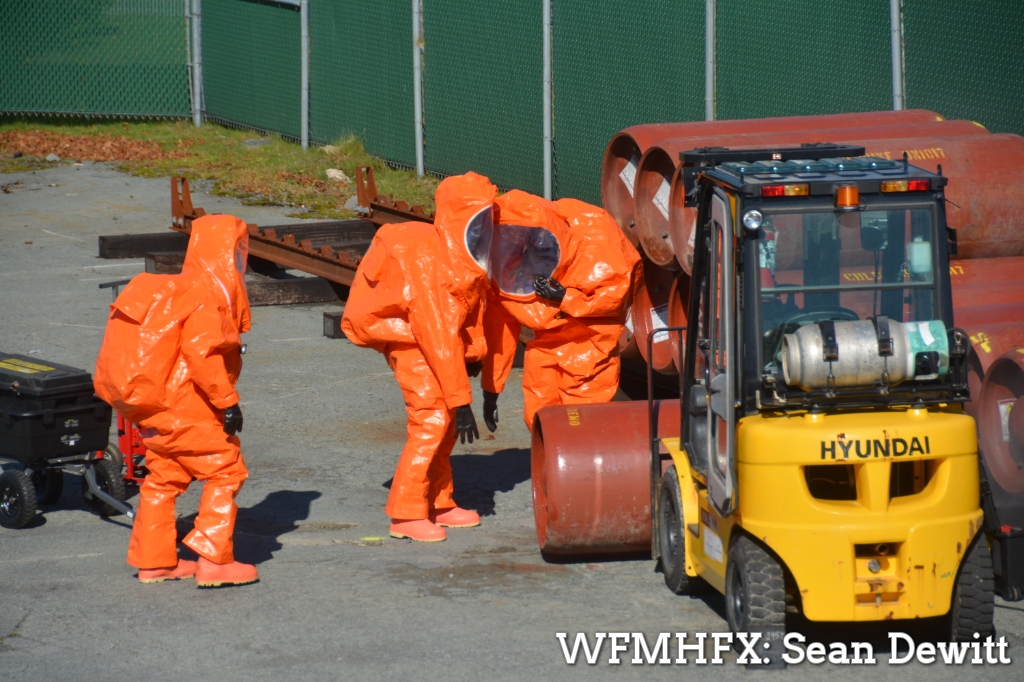
.

.
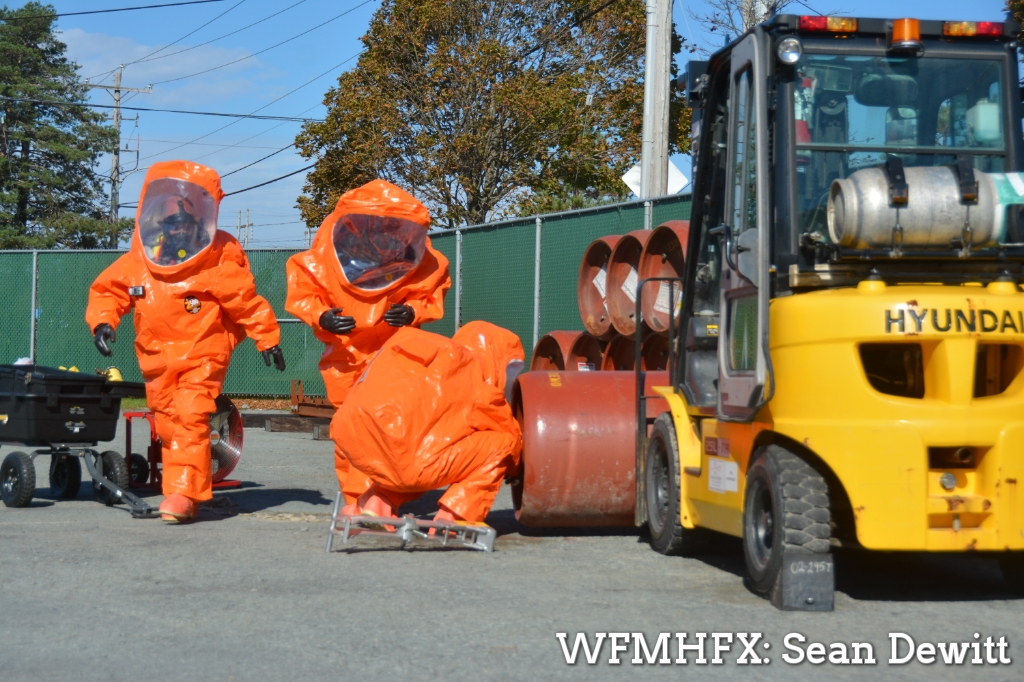
.
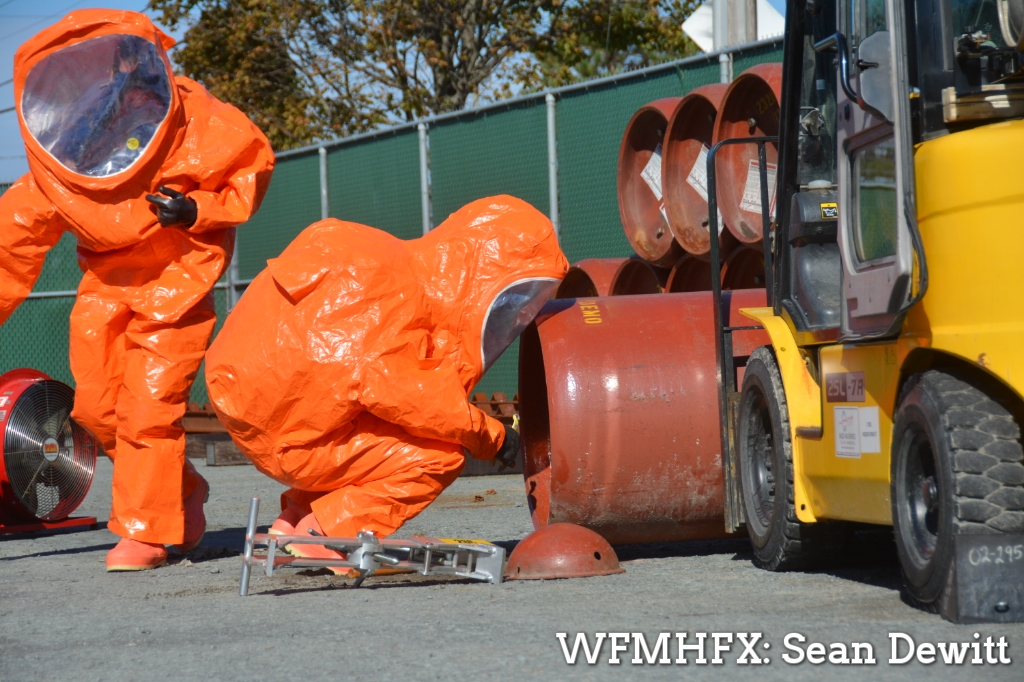
.

.
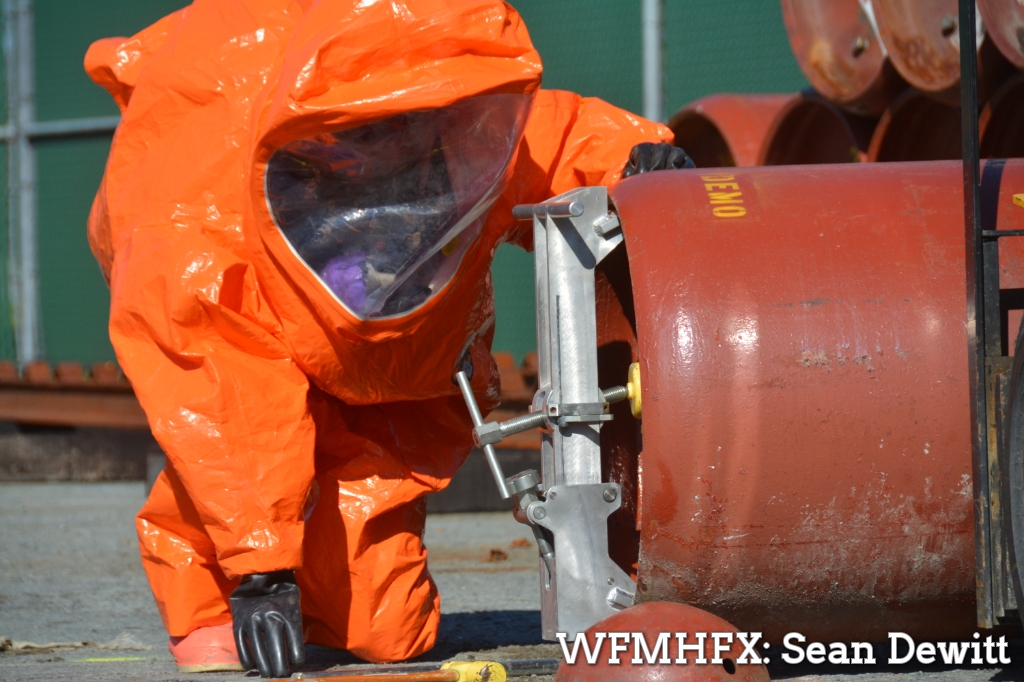
.

.
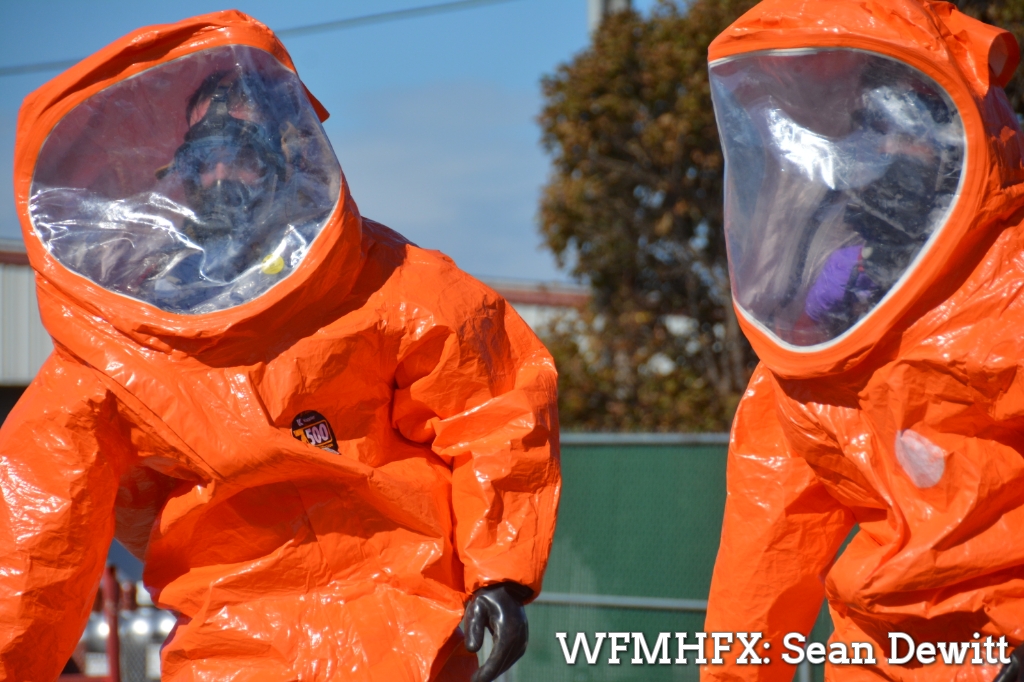
.
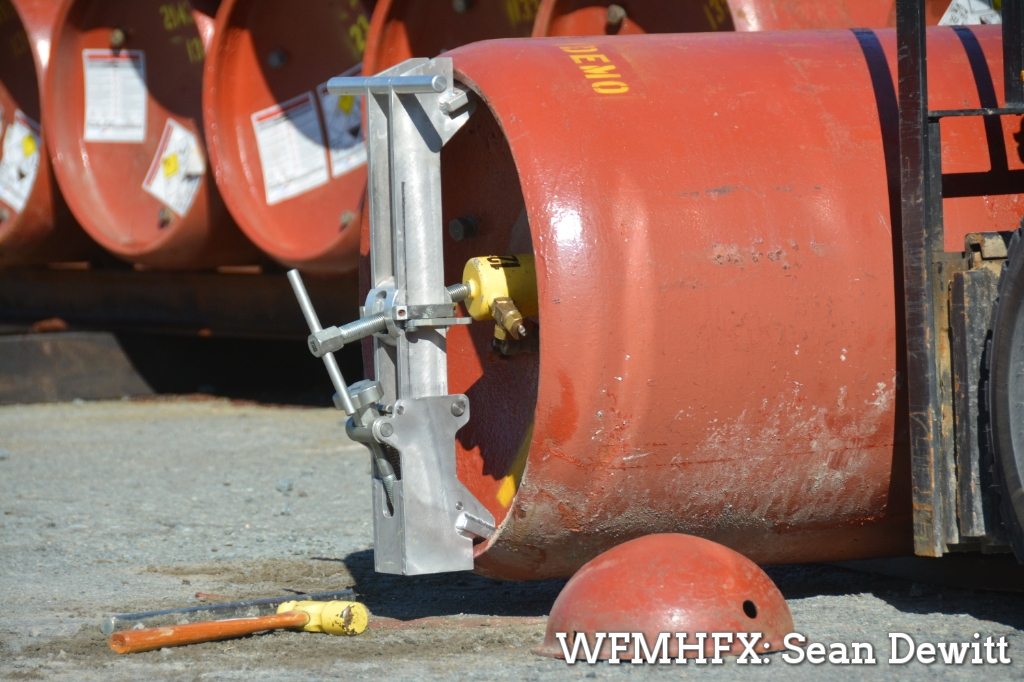
.
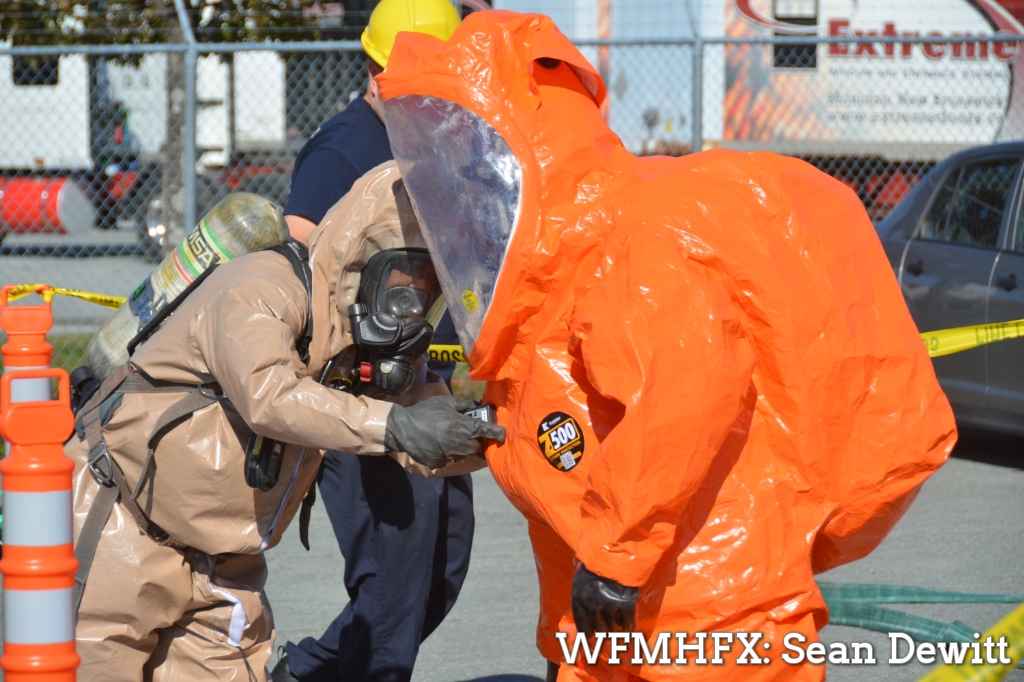
.
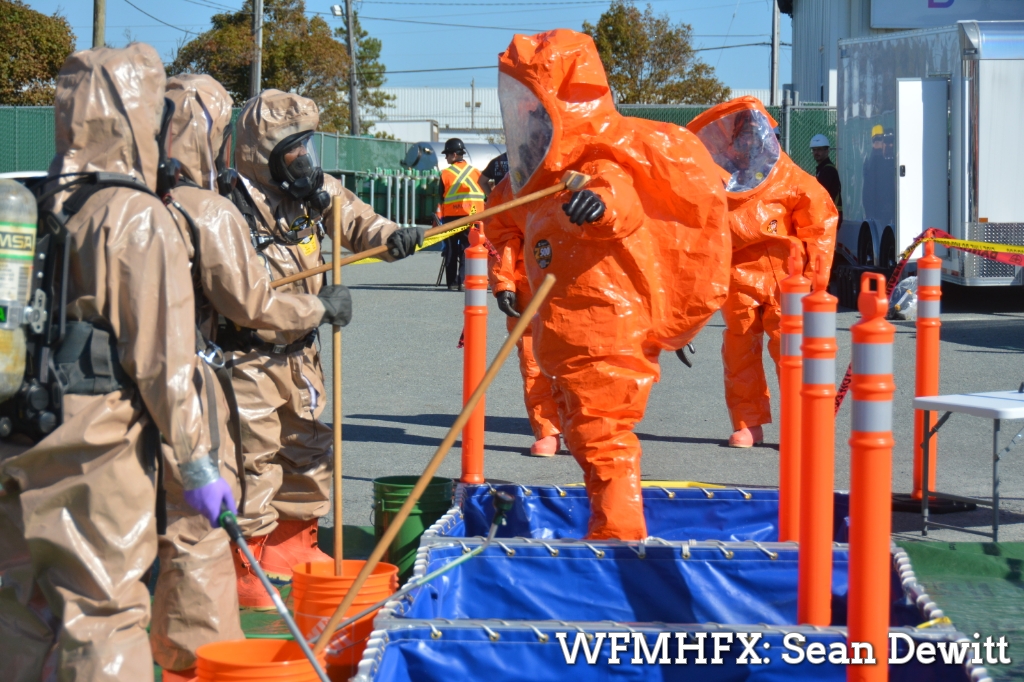
.
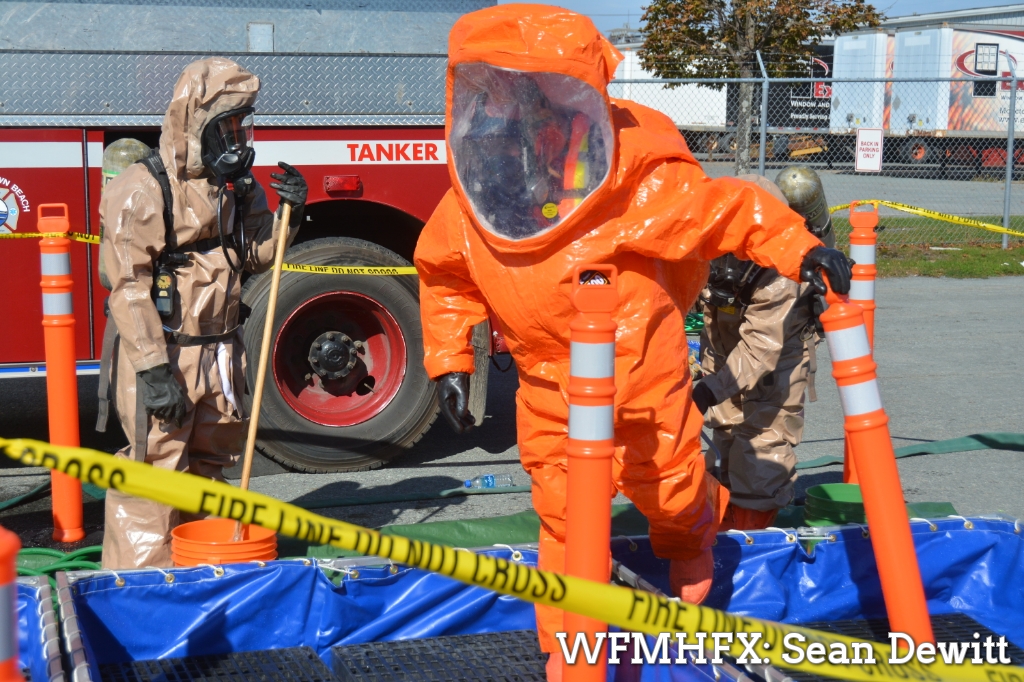
.
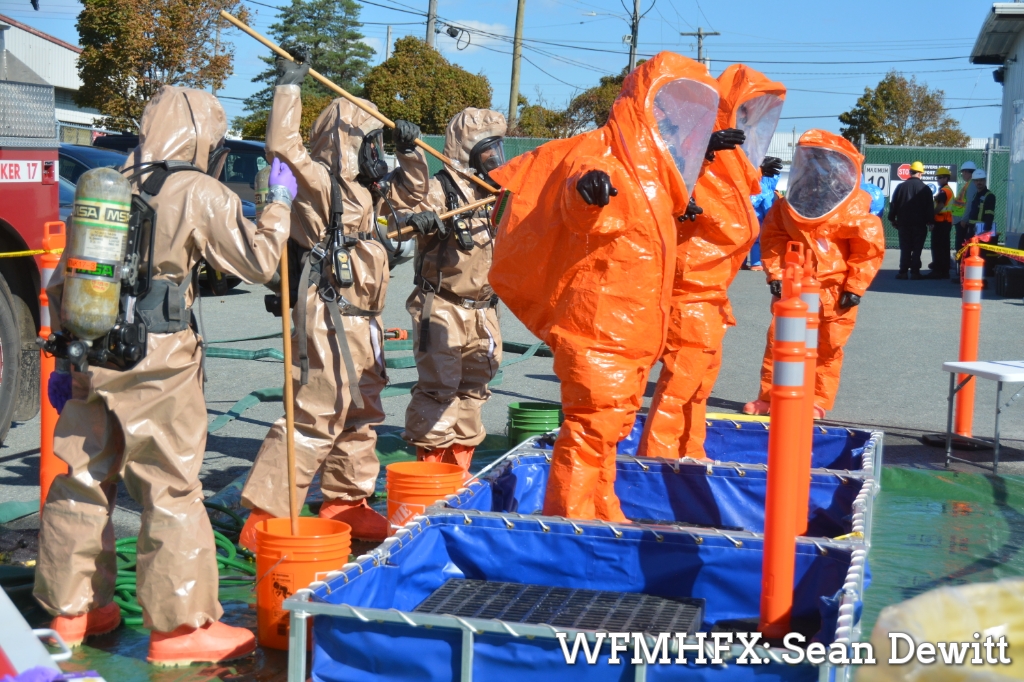
.
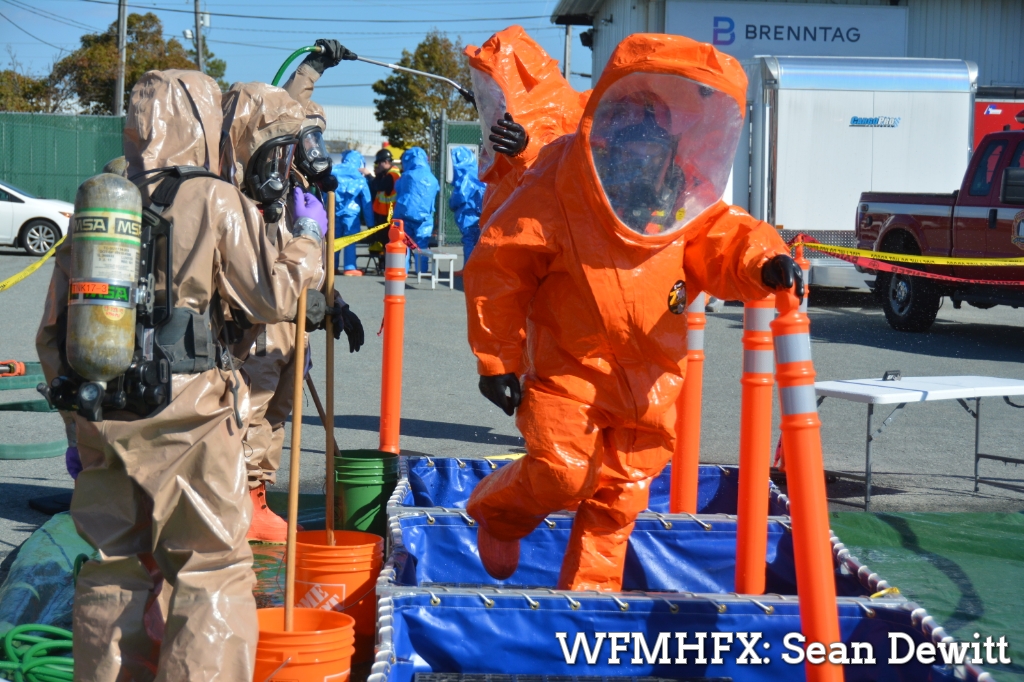
.
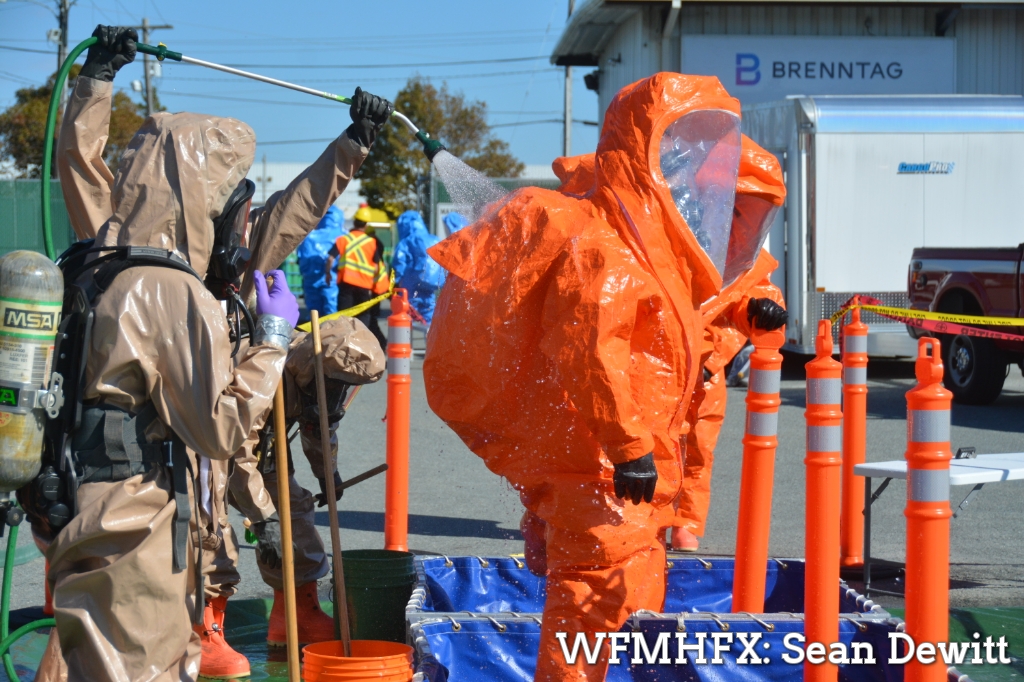
.
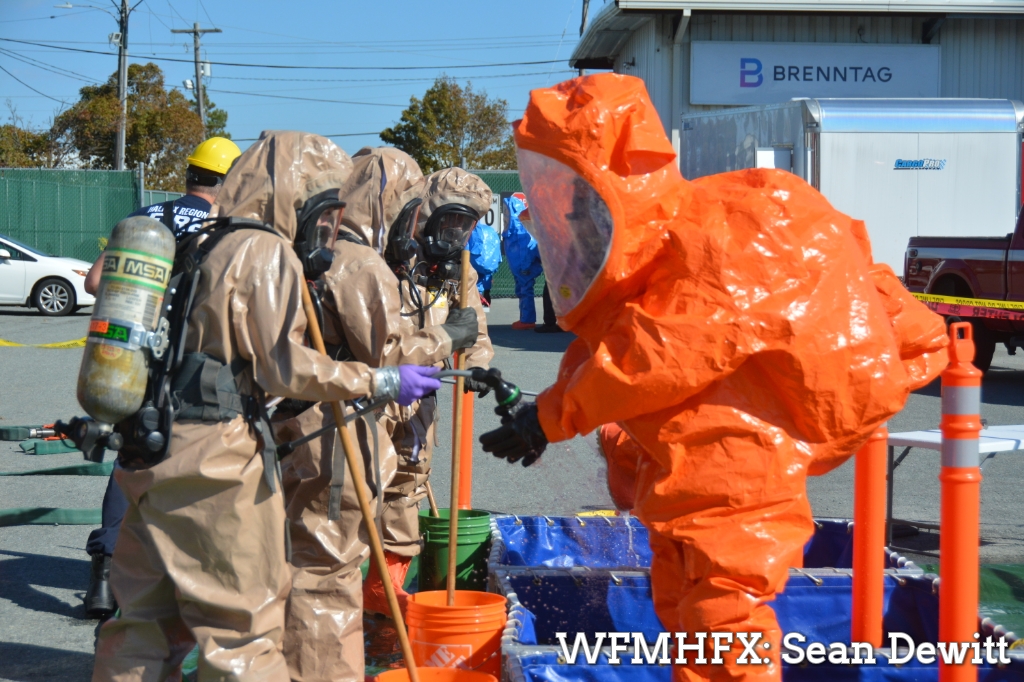
.
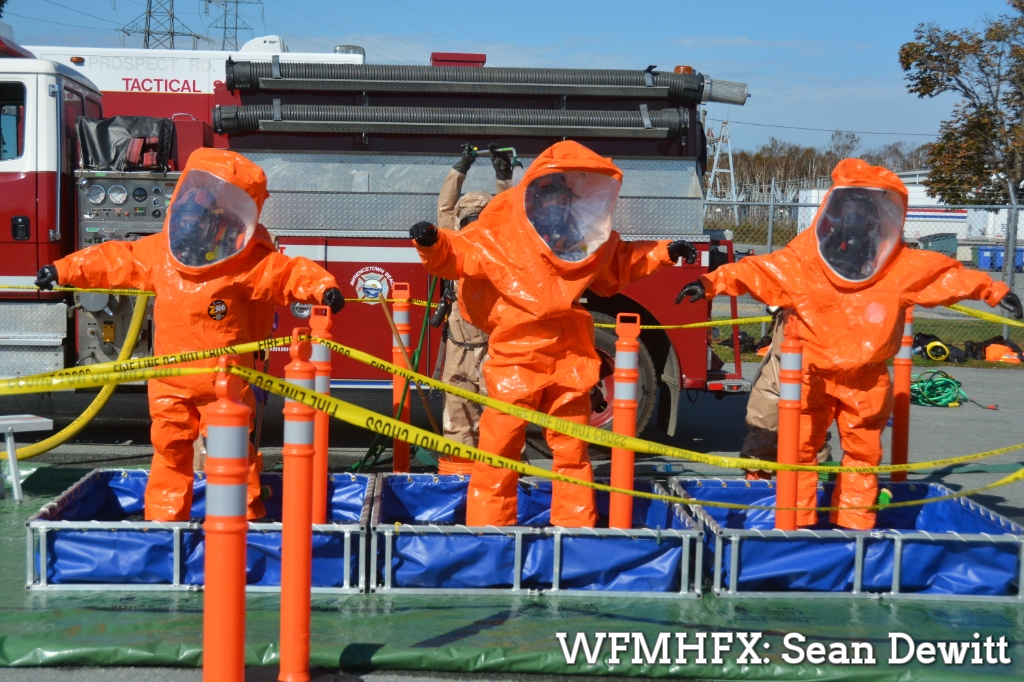
.
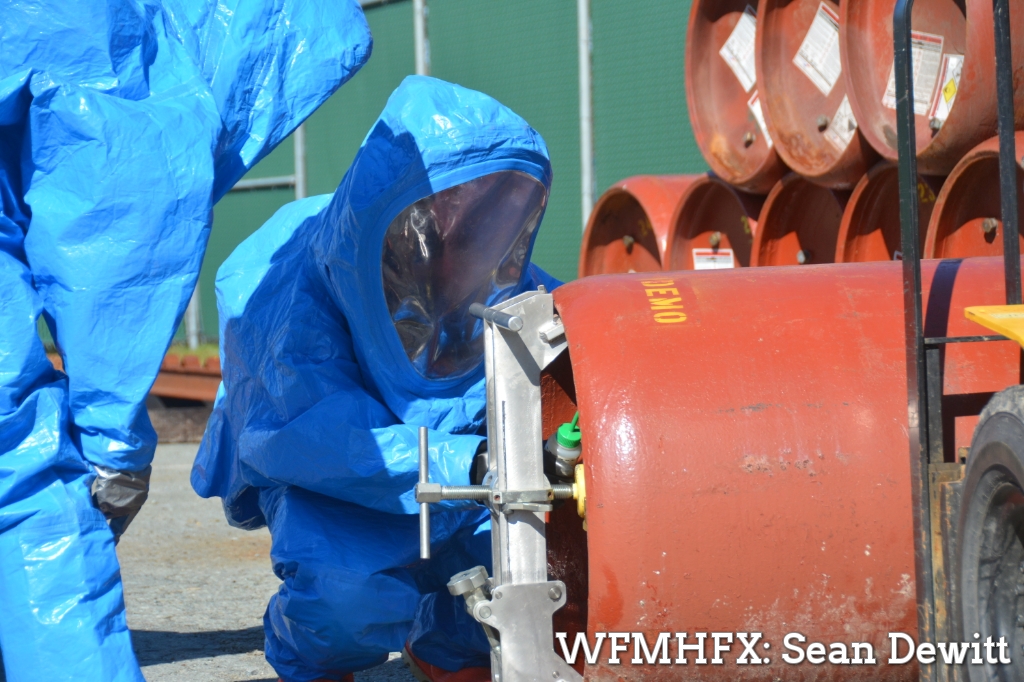
.
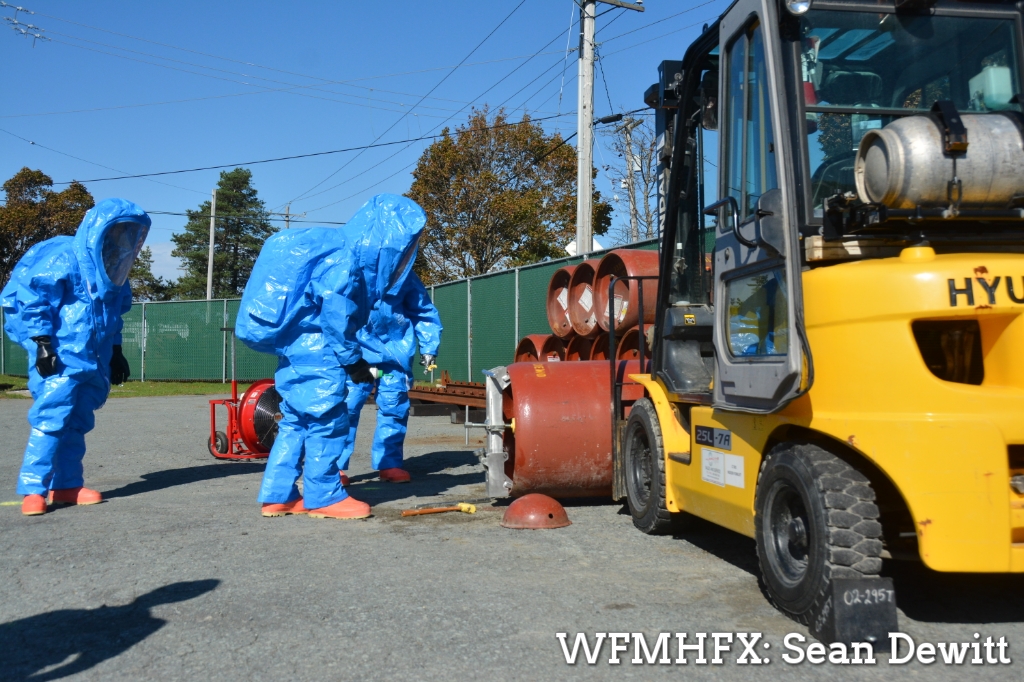
.
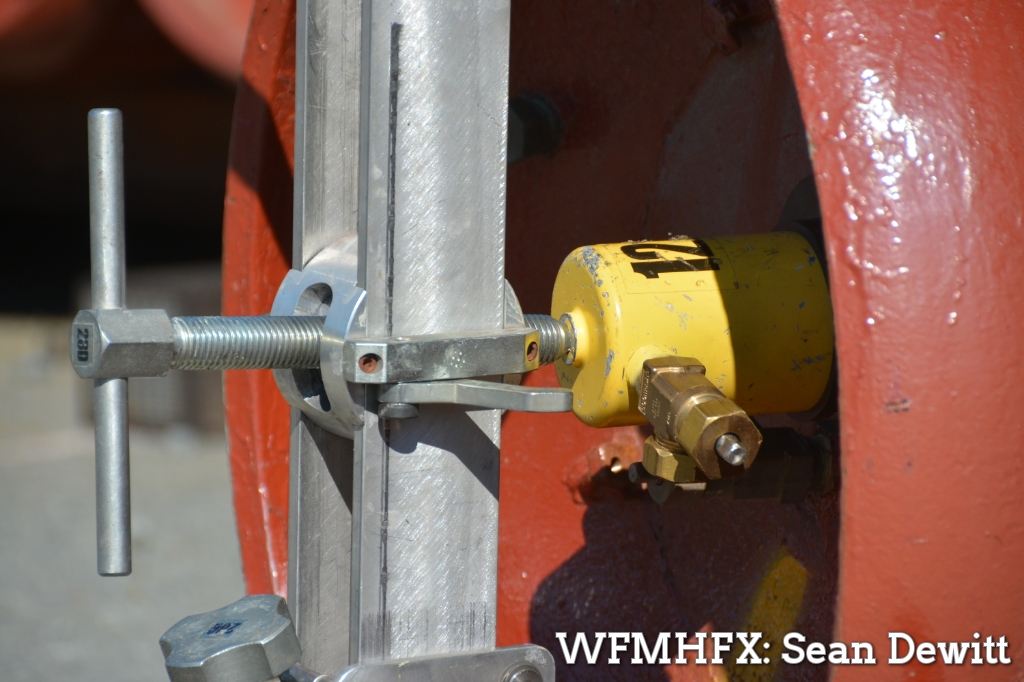
.
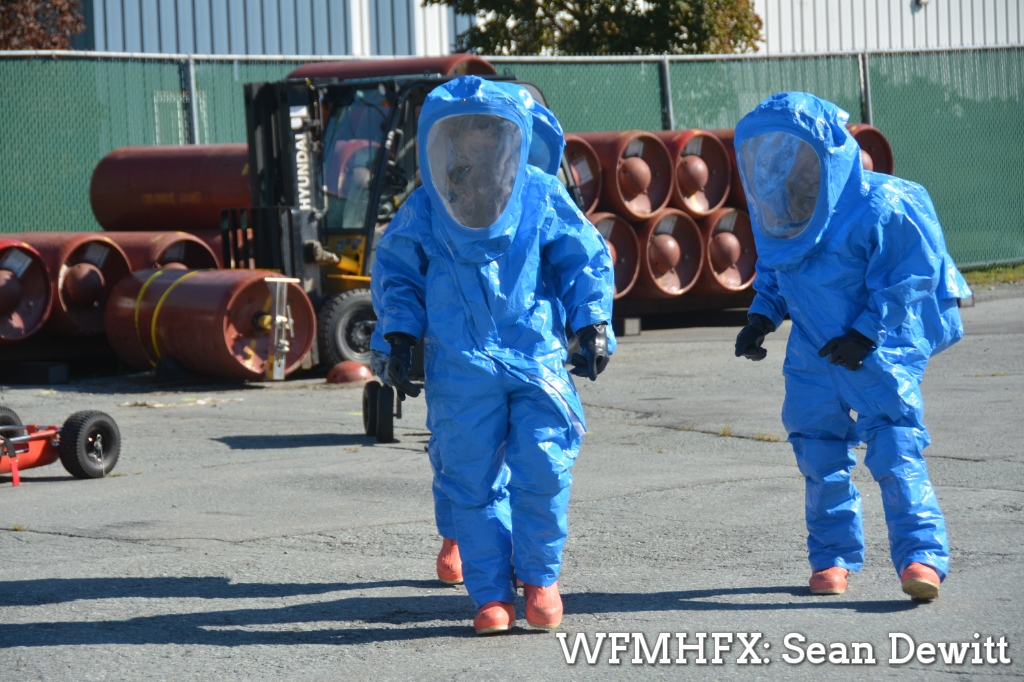
.
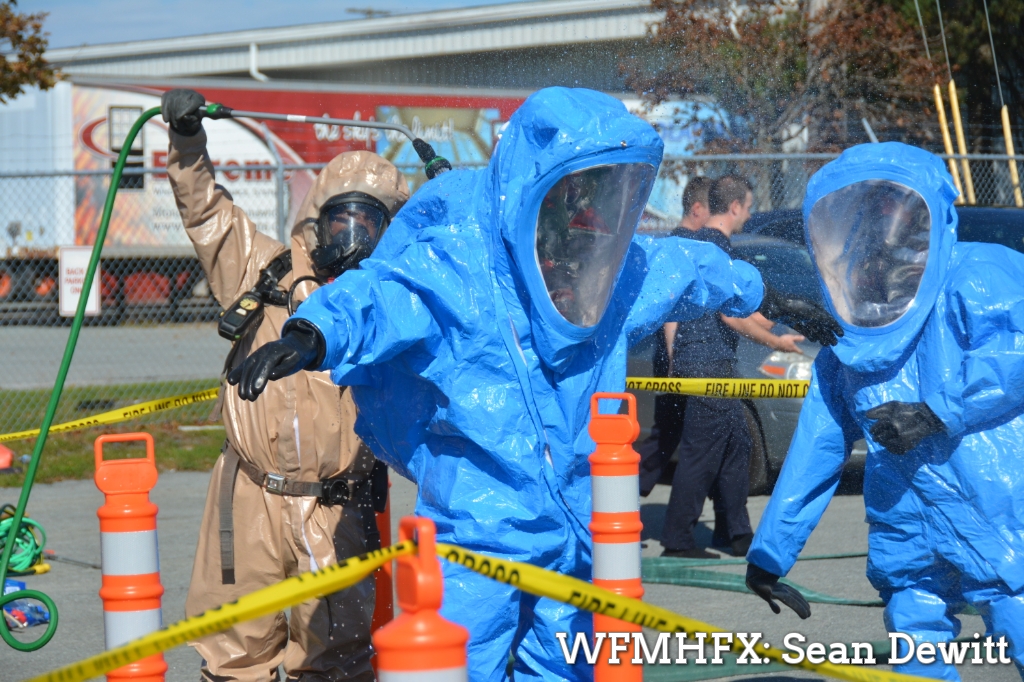
.
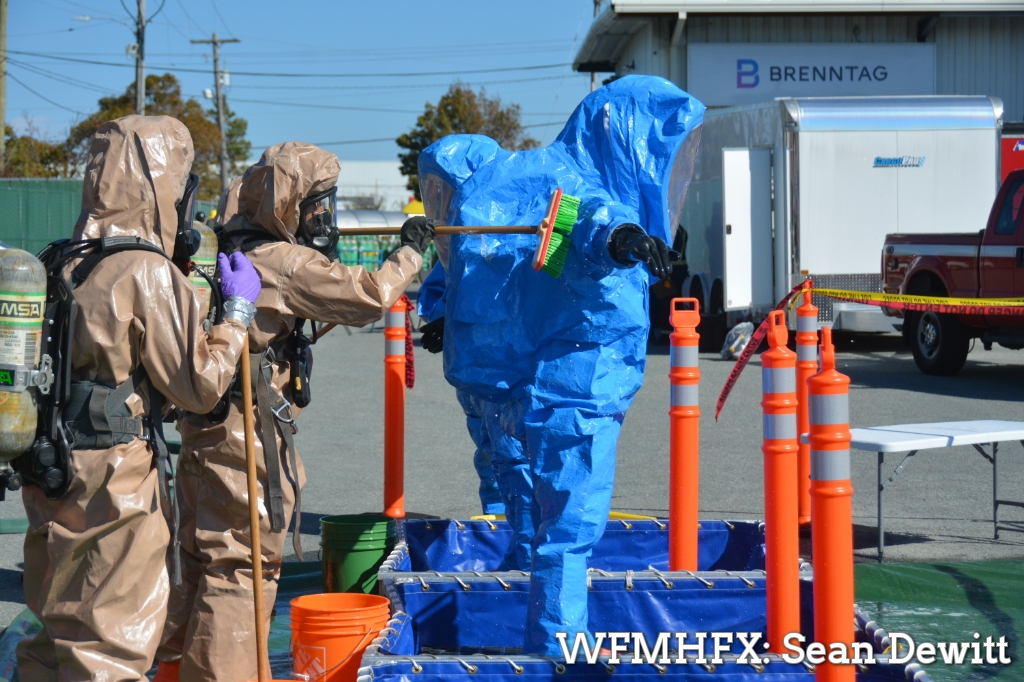
.
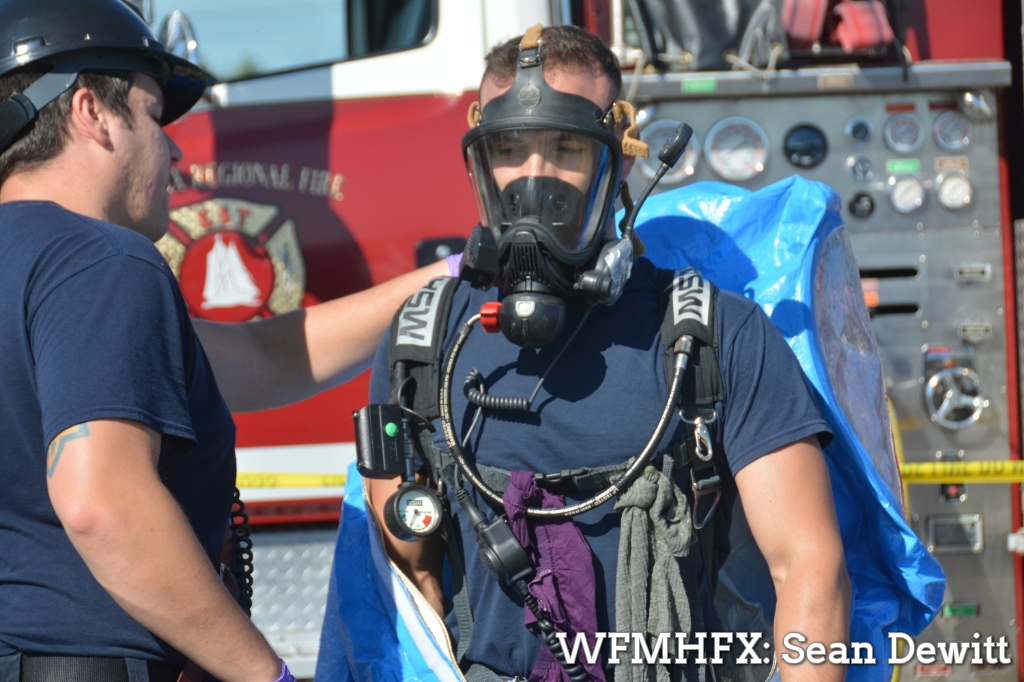
.
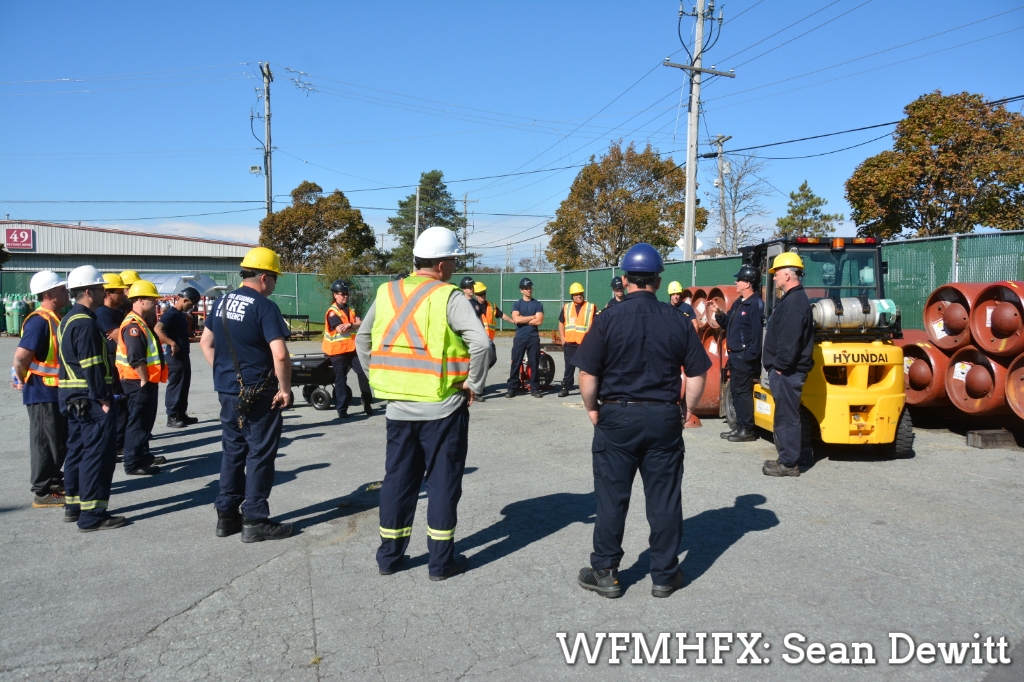
.
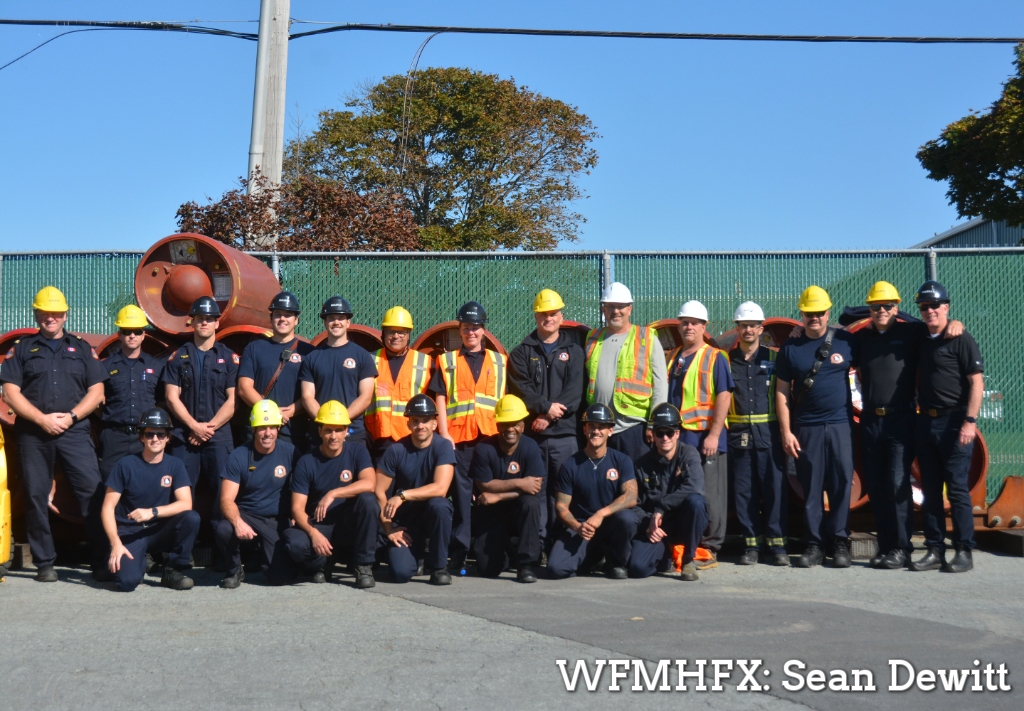
.



